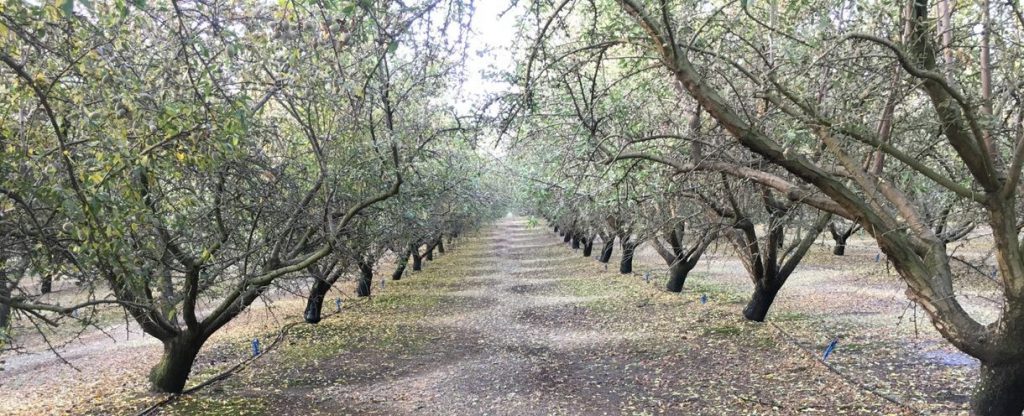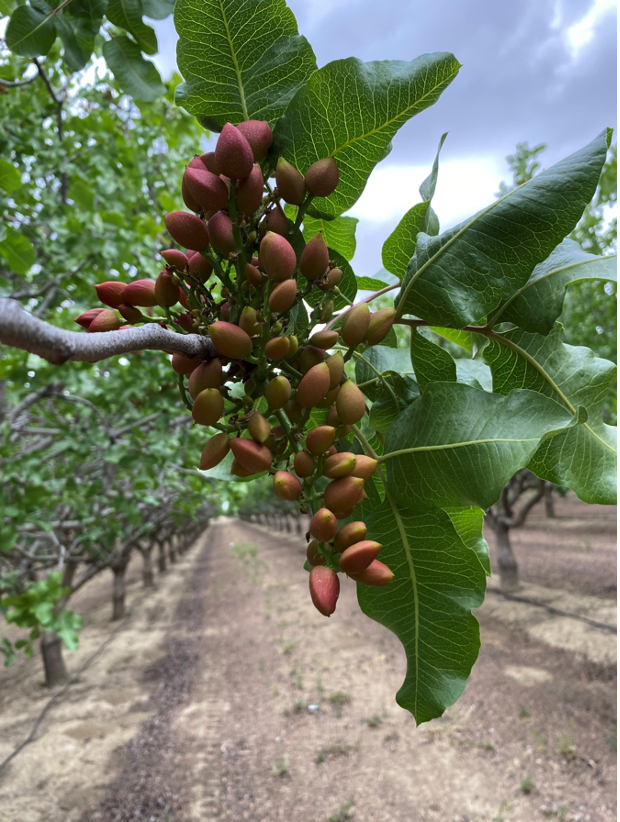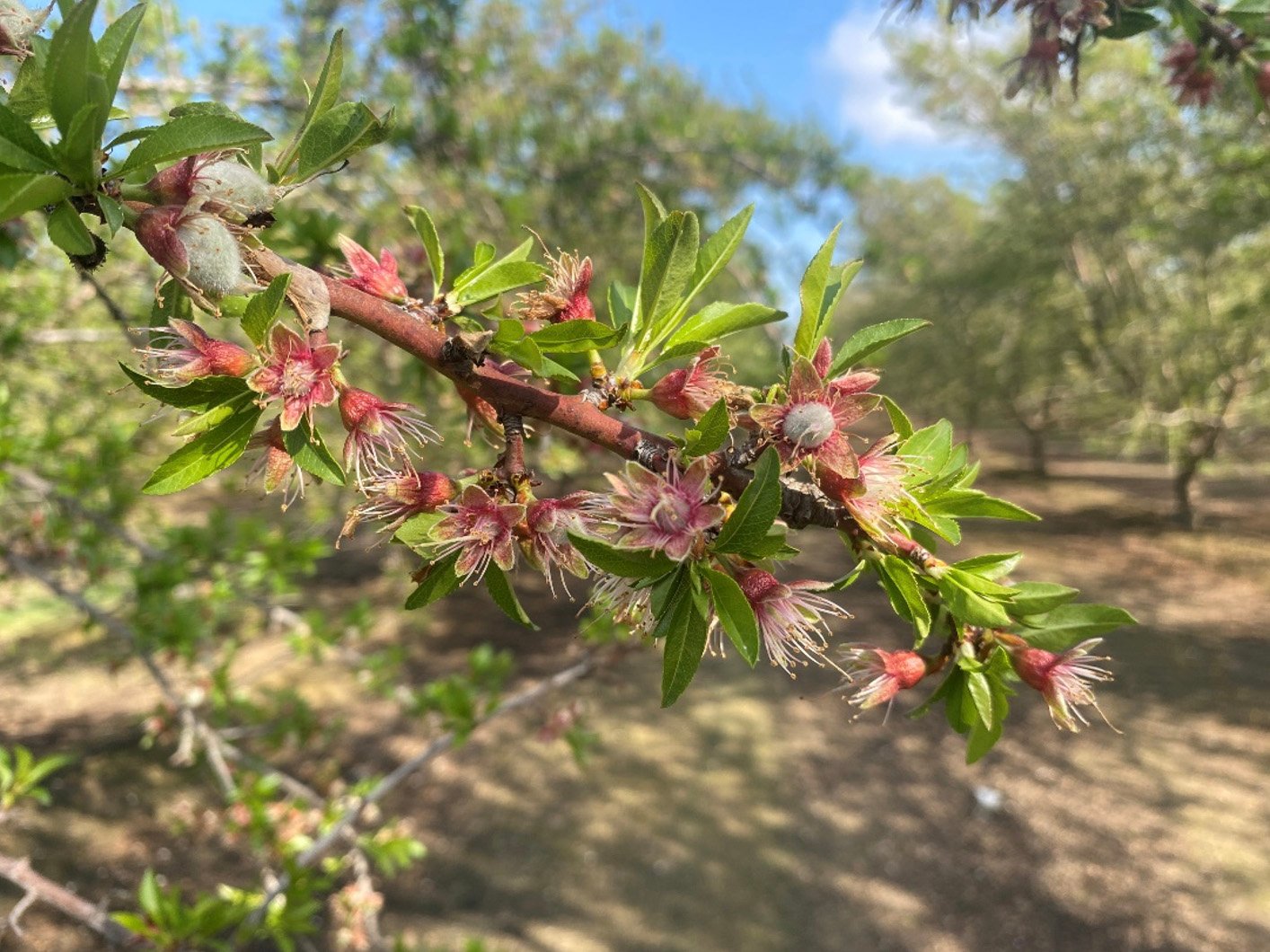Post-Harvest Irrigation

It is finally here: Harvest season! It is time to collect the product of your hard work. After many months of constant work, stress and having to deal with unexpected events, vacation and family time often becomes the next priorities for many growers. As though, these are as important, if not more, there is one more item on the checklist to complete before checking out to ensure that next year’s crop is as good or even better than this one. You guessed it right: post-harvest irrigation.
WHY POST-HARVEST IRRIGATION GETS NEGLECTED
Before explaining best practices, let’s build the foundation of why. To do so, we need to look forward, or backward (cropping is cyclical after all) to bloom and springtime. Spring is a treacherous time for deciduous crops. Leaves are a plant’s factory — the place where all the energy needed to grow and reproduce is created.
However, a deciduous tree doesn’t start the year with its leaves, instead it is expected to come out of dormancy, regrow leaves, provide root flush, produce bloom, AND begin developing fruit, all at the same time, and without the use of its leafy factories — having dropped them the previous fall. “Well…” you may be tempted to say, “the trees regrow their leaves pretty darn quick come spring.”
While true, leaves do show up quite early in the game, the leaves are so fragile and immature they can’t produce enough energy to give back to the tree. As they grow larger, they are able to produce more, but it takes longer than we might think they really don’t begin to create enough sugars (carbohydrates) to give back to the tree until sometime in May (for early trees like almonds). Being that bloom starts in mid-February, that means an almond tree must bloom, grow leaves, flush roots, and grow a nut all the way to the jelly stage (about 3 months) — all without additional input from the newly forming leaves. How is it possible? It is only possible due to the efforts the trees made during the fall, or as we wish to describe it today: post-harvest.
Think about it. A tree uses up all its resources starting spring growth and carrying it into May. At that point, summer heat smacks down and the tree is left working through the dog days with no spare resources to develop and finish the nut and continue canopy growth. That’s asking a lot from our trees!
” This is the period when a tree stores all the energy it will need come spring when it has to bloom, root flush, regrow leaves, and develop a nut without the aid of mature leaves.”
Eventually, harvest comes around and we shake off all of the fully-developed posterity. At last, the tree has finished its labors… or, has it? The end of harvest tends to coincide nicely with cooler days and even cooler nights. Cooler nights signal trees to begin to ship carbohydrates for storage in the roots. With no crop load, cooler temperatures, and fully developed leaves, the tree now has sufficient energy to do so. This is a usually overlooked, but absolutely critical crop stage. This is the period when a tree stores all the energy it will need come spring when it has to bloom, root flush, regrow leaves, and develop a nut without the aid of mature leaves. (have we mentioned that enough yet) If we stress a tree during this critical storage period, we ultimately limit the resources available for the development of fruit in the coming year.
DON’T CUT TREE PRODUCTION SHORT
Have you ever heard of how bonzai trees grow? It is a fascinating art. It is amazing that such a small tree can still look proportional. When a bonsai-ist has a new bonsai, they repeatedly cut off the leaves that first push in the spring. They will cut off a minimum of two flushes of leaves, before letting the third flush grow out. The reason behind this relates so well to this discussion. By cutting off the first two flushes of leaves in the spring, the tree is essentially wasting energy stored in the fall. By the time the third flush grows, the tree is running low on resources and, in desperation, cuts the “cost” of growing leaves by growing smaller leaves. This is why the trees still look proportional, even though they are so small.
” It has been shown that trees forced to drop leaves early, have smaller leaves, smaller fruit loads, and smaller fruit the following season.”
Almond and other tree crops can be limited the same way, being shorted an opportunity to produce and store carbohydrates in the fall. It has been shown that trees forced to drop leaves early, have smaller leaves, smaller fruit loads, and smaller fruit the following season.
Are we wrong in saying that our standard practice for little to no post-harvest irrigation is shorting trees in a similar fashion? Harvest is brutal. No one ever wants to see a shaker or harvester again by the end. By the time harvest is finally complete, it feels like the work is done. The crop is in, holidays are just around the corner, and no one can ever predict what the winter weather will do.
BEST PRACTICES FOR POST-HARVEST IRRIGATION
It is difficult to even think about taking care of our trees at this stage. That is why we can’t blame anyone for just wanting to get the work done, to landplane, apply fertilizer, gypsum, to get the pruners in, and to just forget about patching all the holes in the irrigation line so a proper irrigation can be performed. But when we overlook irrigation management, the trees pay a terrible price. They struggle to produce and store carbohydrates, and then, all too often, we add insult to injury by applying foliar zinc to try to force the leaves off early, effectively shortening the time the tree has to produce and store for the next year.
Understandable or not, how much crop are we losing by not paying more attention to post-harvest irrigation?
” As soon as the last nuts are up off the ground, we need to get in and put a serious amount of water on.”
We can fix this. Out of necessity, almonds get extremely dry during harvest. Heavy equipment, slipping bark, and multiple varieties make it really hard to minimize stress during harvest. By the time harvest is over, the soil is beyond depleted of water, and yet the trees still need a significant amount of water from the soil. As soon as the last nuts are up off the ground, we need to get in and put a serious amount of water on.
A lot depends on the irrigation system and soils, but it is a pretty good rule of thumb to expect to put 200 hours of water on with drip systems in the two weeks following the end of harvest. Or, for fan jets or spinners, expect to put on 90 hours of water in the first week. We know this is a ton of water, but at the end of the day, it will be enough to fulfill the trees’ production needs all while refilling the soil profile. This is usually where we get pushback. The most common responses are, “I need to hurry and get the landplaning done before it rains.” Or, “it will be too muddy for pruners to get in.” Yes, both of those are likely to be true, but this only needs to happen once.
” With a rehydrated soil and a normal irrigation schedule, you will have plenty of time to perform all the needed cultural practices.”
If you take the time to put on water to mitigate stress and refill the profile first, you can then return to a normal irrigation schedule: 48 hours per week, or so, and lessening as cooler weather brings lower ETs. At that point, all you have to do is watch your tension and apply a reasonable amount of water when it is needed. It won’t be muddy and soaked all the way into winter. With a rehydrated soil and a normal irrigation schedule, you will have plenty of time to perform all the needed cultural practices. And at the same time, your trees will be producing like they should and will be fully recharged and ready to put on an incredible show in the spring. In the long run, it is a pretty minor adjustment. It changes the way post-harvest practices are prioritized, but it gives your trees the best chance to really produce and gives you the best chance of really making it big with your next season.
Additional Reading
http://thealmonddoctor.com/2011/09/14/the-importance-of-post-harvest-irrigation-in-almond/





